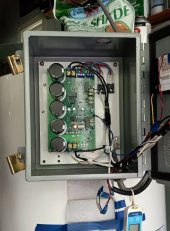Maybe I am missing something but you do not need solar panels to heat water from sunlight. There are several solar water heaters that just involve black pipes where water can pick up heat from being in the sun. You can then use a solar panel supplied pumping system to transfer the water.I’m wanting to put a couple of solar panels on to outbuilding roof and use output to heat immersion heater for domestic hot water ( I have boiler backup)
I don’t want a grid tied system - completely standalone
I want to keep the existing 3kW element as I don’t think it will come out of the cylinder!
Don’t want batteries- just want to feed the output via inverter direct to immersion
Is there an inverter that will do this?
Anyone done it?
Back when I first moved out to my remote location I simply used a black garden hose to get hot water for washing up. Had to be careful though because the water could be scalding hot after an hour in the sun.



